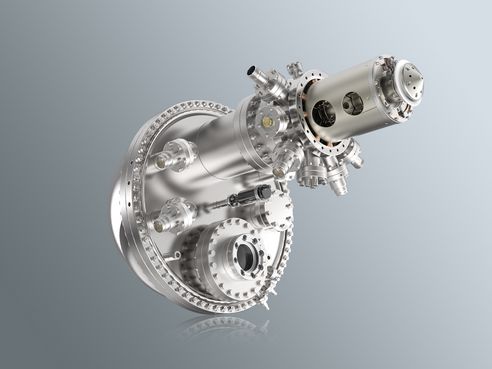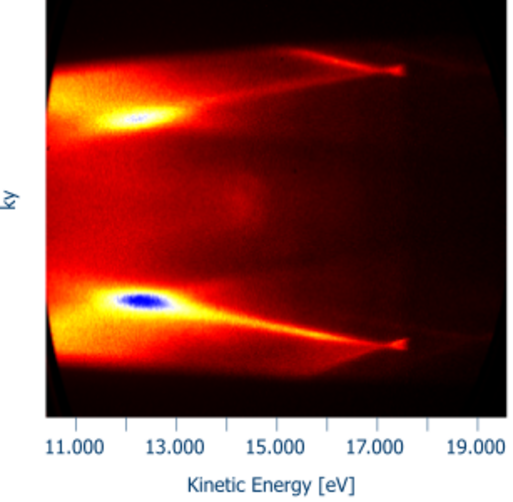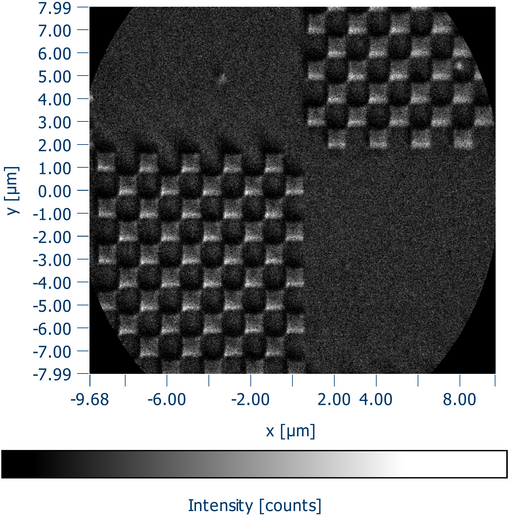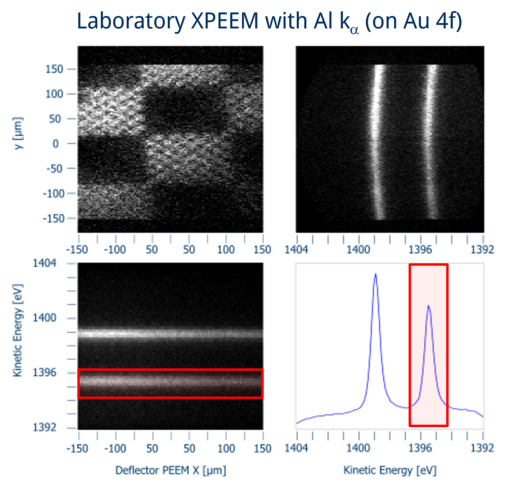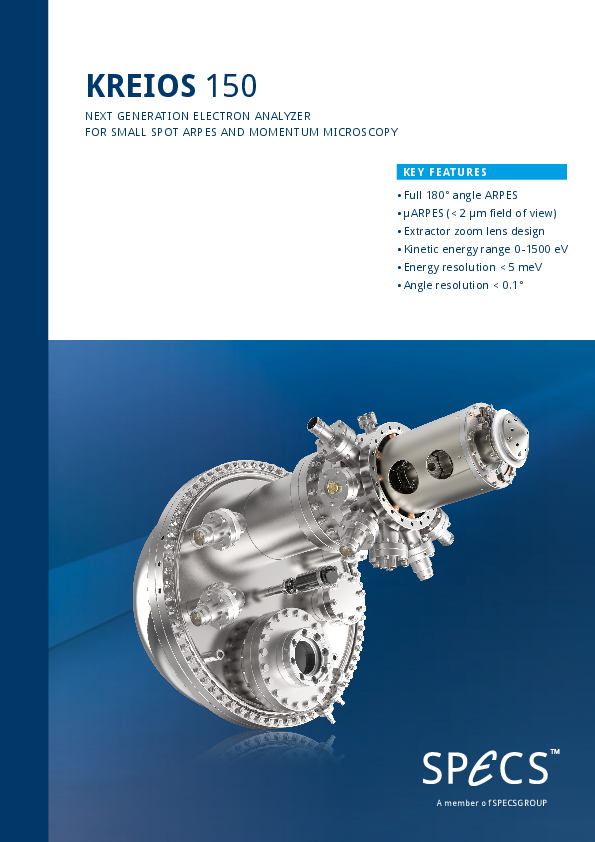 Detail
DetailKREIOS 150 S
Next Generation Electron Momentum Spectrometer for Small Spot ARPES and Momentum Microscopy
The KREIOS 150 S is a new generation of electron spectrometers for high performance ARPES and PEEM. The unique lens system combines an immersion lens for PEEM operation with a hemispherical energy analyzer scanning system for unrivaled ARPES measurements. Its lens system acquires the full half sphere of the electron emission for ultimate angular acceptance of 180°.
The KREIOS 150 S displays energy vs k-vector or energy vs spatial information directly on the detector. With the scanning lens it is possible to measure a full 3D dataset for ARPES or energy filtered PEEM. The lens system features apertures to refine the k-space into high contrast and dark field PEEM, as well as field apertures to select a spatial region for µ-ARPES down to 2 µm field of view. The kinetic energy up to 1500 eV allows XPS and XPEEM measurements. With the new CMOS detector, the KREIOS 150 S is the most performing ARPES analyzer available.
With a 2D CMOS detector it shows outstanding performance in count rate, linearity and a true pulse counting mechanism. It combines a state-of-the-art lens system with a proven hemisphere design for highest transmission and resolution.
The energy analyzer section is equipped with 8 customizable entrance and 3 exit slits. For highest energy and mapping resolution the entrance slit can be chosen down to 50 µm. The analyzer comes with a highly stable power supply, for best performance in a wide kinetic energy range.
This analyzer features the spectroscopy mode for data acquisition. For momentum microscopy a special MM and MM Twin version is available.
Advanced ARPES
PEEM
In PEEM mode, a real space image of the surface is aquired in energy dispersive mode. Line by line, a complete eneryg filtered PEEM image is aquired, whcih can be used to identify ares of interest on the sample. Here a secondary electron image of a chessboard test sample (Au/Si) is shown, showing best resolution <50 nm.
XPEEM
The KREIOS 150 was used for laboratory based XPEEM studies using a µFOCUS 500 monochromated x-ray source. The chessboard test sample (Au/Si) was measured on the Au 4f core level, revealinbg a clear chemcial contrast with respect to the substrate.
Thanks to the high transmission of the PEEM lens combined with a hemispherical energy filter, teh KREIOS 150 is an ideal instrument for cpmbined chemical and electronic structure analysis.
SPECIFICATIONS
| Energy Resolution | < 5 meV |
| Angular Resolution | < 0.1° for 0.1 mm emission spot for He I |
| k-Resolution | 0.008 Å-1 for 0.1 mm emission spot @ He I |
| Acceptance Angle | ±90° full cone |
| Lateral Resolution | 50 nm |
| Smallest Acceptance Spot | 2 µm |
| XPS Count Rates UHV | N/A |
| Detector Channels | 1285 x 730 (with Channel Binning) |
| Kinetic Energy Range | 0-1500 eV |
| Angular Resolved Modes | N/A |
| Pass Energies | 1-200 eV Continuously Adjustable |
| Magnetic Shielding | Double µ-Metal Shielding |
| Energy Dispersion | Hemisphere |
| Lens Modes | PEEM Mode, Momentum Resolved Mode |
| Measurement Modes | Snapshot Mode, Sweeping Mode |
| Detector | 2D CMOS Detector with Spin Option |
| Slits/Apertures | 8 entrance and 3 exit slits and iris aperture |
| Energy Window | 13% of Pass Energy |
| Electric Isolation | > 3.5 keV, 29 keV on lens system |
| Electronics | HSA + for KREIOS |
| Working Pressure | 10-11 to 10-7 mbar |
| Working Distance | 4-10 mm |
| Mounting Flange | DN150CF (8" OD) |
